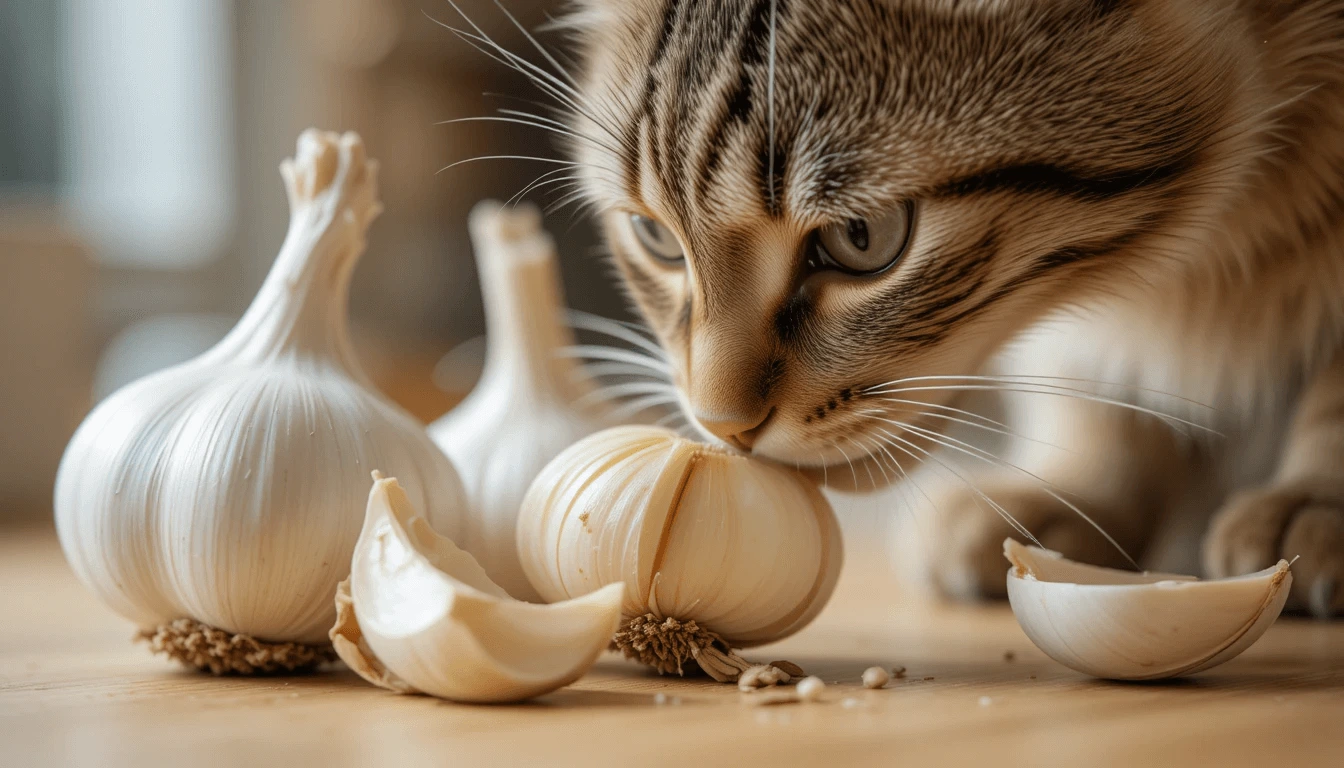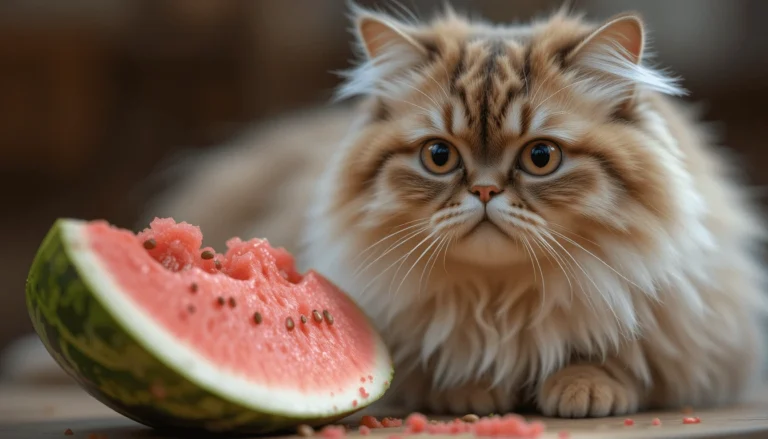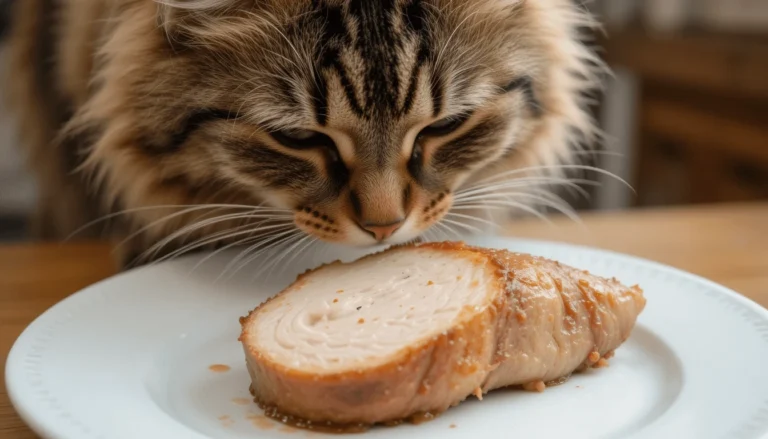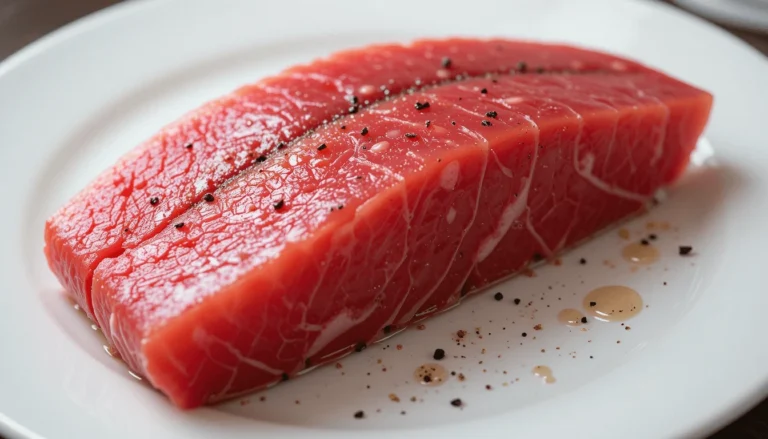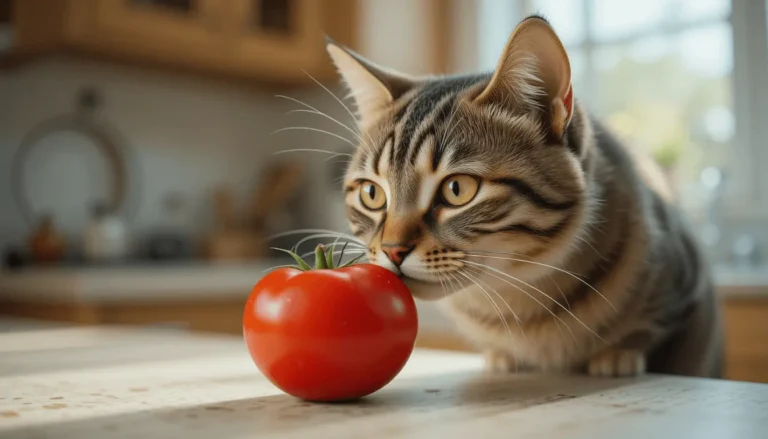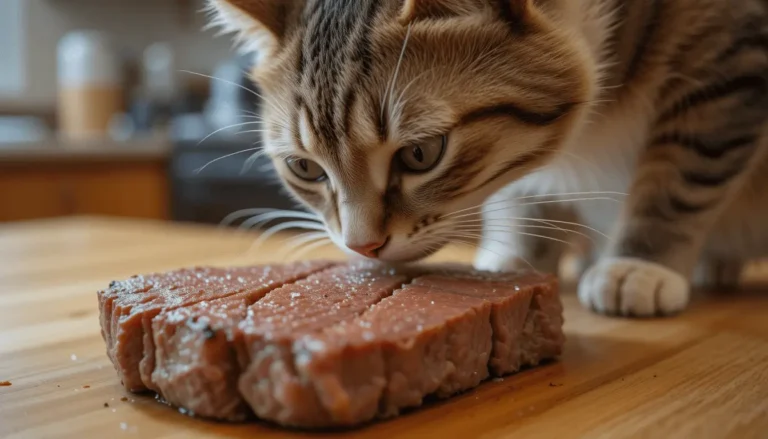Can Cats Eat Garlic? Risks, Toxicity, and Safe Alternatives
Introduction
“It was just an ordinary evening—until I caught my curious tabby, Whiskers, pawing at a fallen clove of garlic from the kitchen counter. My heart raced. Can cats eat garlic? I’d heard rumors it was dangerous, but how bad could one tiny piece be? As I frantically searched for answers, I discovered a terrifying truth: garlic, even in small amounts, is highly toxic to cats. That moment changed how I viewed every ingredient in my kitchen—and it might just save your feline friend’s life too.”
Is Garlic Safe for Cats? The Shocking Truth
As cat lovers, we want to share everything with our furry companions—but some human foods are downright dangerous. Can cats eat garlic? The short answer is no, and the reasons might shock you. Garlic, along with onions, leeks, and chives, belongs to the Allium family, which contains compounds that can cause severe harm to cats. Let’s break down the science, risks, and what makes garlic so toxic to our feline friends.
Why Garlic is Toxic to Cats (Garlic Poisoning in Cats)
Garlic contains thiosulfate, a compound that cats (and dogs) cannot properly metabolize. When ingested, thiosulfate damages red blood cells, leading to hemolytic anemia—a condition where the body destroys its own blood cells faster than it can replace them.
- How it happens: Thiosulfate causes oxidative damage, making red blood cells burst (a process called Heinz body anemia).
- Symptoms may not appear immediately: It can take 2-4 days for signs of poisoning to show, making early detection difficult.
- Cats are especially vulnerable: Unlike humans, cats lack the enzymes needed to break down these compounds safely.
The ASPCA warns that garlic’s toxicity level for cats is significantly higher than onions – in fact, it’s about five times more dangerous. (Source: ASPCA Toxic Plant List)
Transition: Now that we know why garlic is dangerous, let’s explore how much can harm your cat.
How Much Garlic is Dangerous? (Toxic Foods for Cats)
You might think, “A tiny bit won’t hurt,” but even small doses can be harmful.
- As little as 1 small clove (or 1/2 teaspoon of powdered garlic) can cause toxicity in an average-sized cat.
- Cats weighing under 10 lbs are at higher risk—just 5 grams of garlic (about 1-2 cloves) can be life-threatening.
- Garlic powder is more concentrated, meaning even a pinch in food could be dangerous.
A 2019 study in Toxicon found that cats exposed to garlic showed signs of anemia within 24 hours, reinforcing that no amount is truly safe. (Source: Toxicon Journal Study)
But how does garlic compare to its close relative, the onion?
Garlic vs. Onions: Which is Worse? (Onion and Garlic Toxicity in Pets)
Both garlic and onions are toxic, but garlic is more potent.
- Garlic contains higher thiosulfate levels, making it stronger than onions in damaging red blood cells.
- Onions are more commonly ingested (think onion rings, soups), but garlic’s concentrated form (powder, oils, supplements) poses a stealthier risk.
- Cooking doesn’t help: Heat doesn’t break down thiosulfate, so cooked garlic (in sauces, broths, or seasonings) is just as dangerous.
The Pet Poison Helpline reports that Allium toxicity cases spike around holidays when garlic-heavy dishes (like gravy or stuffing) are more common. (Source: Pet Poison Helpline)
Final Thought: Whether raw, cooked, or powdered, garlic has no place in a cat’s diet. If you suspect your cat has eaten any, contact your vet immediately.
Symptoms of Garlic Toxicity in Cats: Know the Warning Signs
As loving cat parents, we know our feline friends can be curious—and sometimes that curiosity leads them to dangerous foods. If you suspect your cat has eaten garlic, time is critical. Clinical signs of garlic poisoning typically emerge within the first day of ingestion, though in some cases may not become apparent for up to four days. Let’s break down the signs so you can act fast.
Early Warning Signs (Symptoms of Garlic Toxicity in Cats)
The first symptoms of garlic poisoning are often mild but concerning, mimicking common stomach upset. Watch for:
- One of the first noticeable signs is gastrointestinal upset, including regurgitation of food and loose, watery bowel movements.
- Lethargy & weakness – Unusual tiredness or reluctance to move.
- Loss of appetite – Refusing food or treats, even favorites.
Why this matters: These signs can easily be mistaken for a minor stomach bug, but if your cat had access to garlic (even licking a plate with garlic butter), don’t wait—early vet intervention improves recovery chances.
Severe Reactions (What to Do If a Cat Eats Garlic)
When garlic toxicity progresses, red blood cell destruction leads to hemolytic anemia. Critical signs include:
- Pale or white gums – A telltale sign of anemia (check the gums by lifting the lip).
- Rapid breathing or panting – Due to oxygen deprivation.
- Jaundice (yellowing of eyes/gums) – Indicates liver strain from dying blood cells.
Immediate Action Required:
- Remove any remaining garlic – Prevent further ingestion.
- Note the amount & time eaten – Helps the vet assess risk.
- Call your vet or Pet Poison Helpline (888-426-4435) – Do not induce vomiting unless instructed.
When to Call the Vet Immediately (Vet-Approved Cat Diet Tips)
Garlic toxicity is an emergency if your cat shows:
- Collapse or extreme weakness
- Dark orange/brown urine (from ruptured blood cells)
- Seizures (rare but possible in severe cases)
What the Vet Will Do:
- Administer activated charcoal to bind toxins.
- Provide IV fluids to support kidney function.
- Perform blood transfusions in extreme anemia cases.
Prevention Tip: Store garlic (and all Allium foods) in sealed cabinets. Even garlic powder can tempt curious noses!
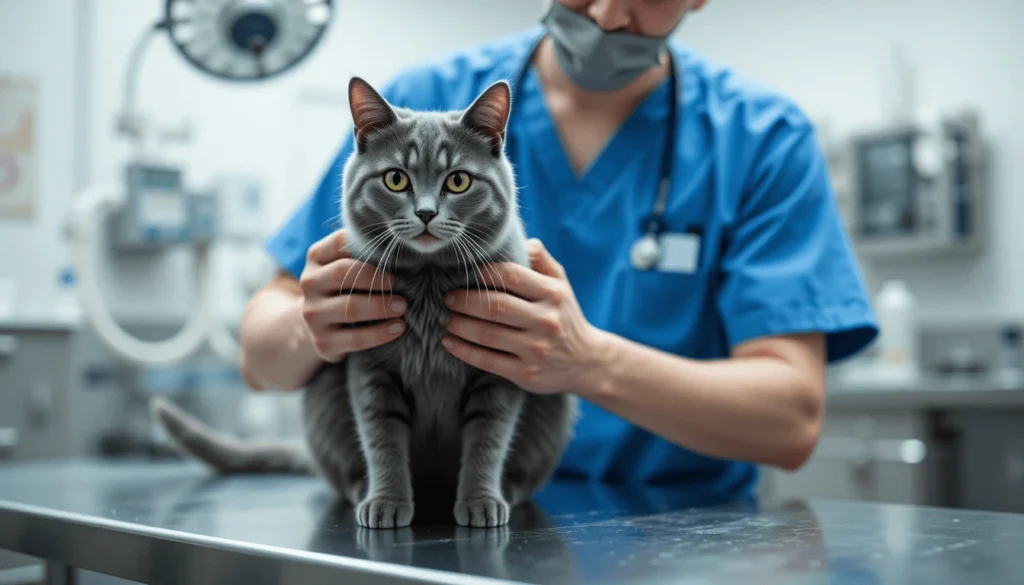
Safe Alternatives to Garlic for Cats
Just because garlic is off-limits doesn’t mean your cat can’t enjoy flavorful treats. Let’s explore healthy, non-toxic options to spice up their diet—safely!
Cat-Friendly Herbs & Spices (Cat-Friendly Herbs and Spices)
These herbs add aroma and variety without the risk:
- Catnip – A feline favorite that’s 100% safe (and fun!).
- Parsley – Freshens breath in tiny amounts.
- Basil & thyme – Mild herbs some cats enjoy sniffing.
Pro Tip: Offer fresh cat grass (wheatgrass) to satisfy chewing urges.
Healthy Human Foods Cats CAN Eat (Safe Human Foods for Cats)
Share these nutritious snacks (in small portions):
- Cooked chicken/turkey – Plain, boneless, and skinless.
- Salmon or sardines (in water, no salt) – Omega-3 boost.
- Pumpkin puree (not pie filling) – Aids digestion.
Avoid: Onions, chives, grapes, chocolate, and anything seasoned with garlic.
Transition: Keep these foods secure to prevent accidental ingestion.
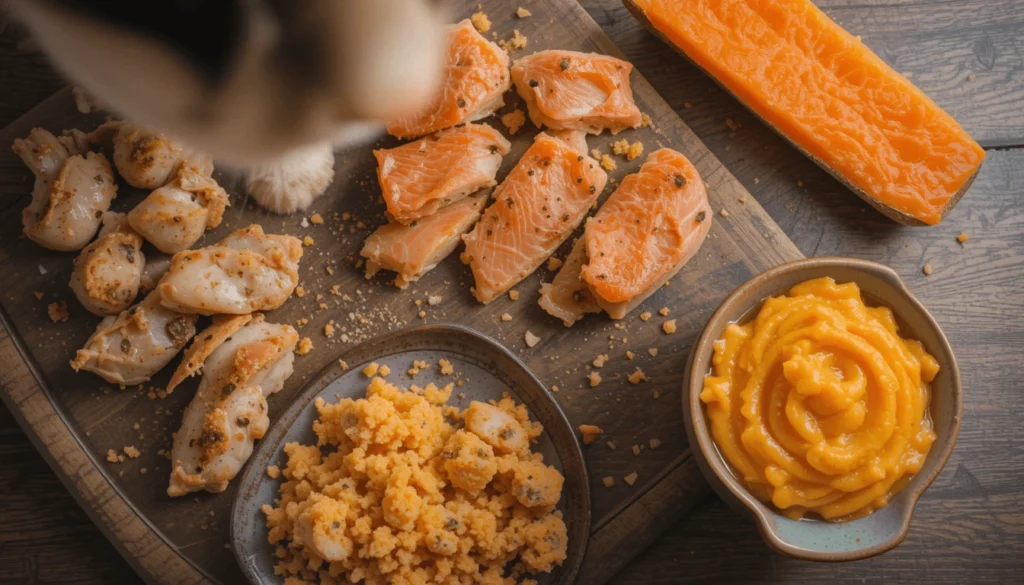
How to Keep Your Cat Away from Harmful Foods (Why Is Garlic Harmful to Cats?)
Cats are master thieves when it comes to food. Deter them with:
- Airtight containers for garlic/onions.
- Childproof latches on lower cabinets.
- Training with firm “no” and redirecting to toys.
Final Tip: Never feed table scraps without checking ingredients first!
Conclusion: Keeping Your Cat Safe and Satisfied
The question “Can cats eat garlic?” has a clear answer: No—never. Garlic’s hidden toxicity can lead to severe, even life-threatening health issues for your feline companion. But by recognizing the early symptoms of poisoning, acting quickly in emergencies, and offering safe, delicious alternatives, you can protect your cat while still letting them enjoy mealtime excitement.
- Remember:
- Garlic in any form is dangerous—raw, cooked, or powdered.
- Symptoms like vomiting, pale gums, or lethargy demand immediate action.
- Cat-safe herbs, lean meats, and pumpkin make excellent alternatives.
As responsible pet parents, it’s our job to keep harmful foods out of reach while providing a nutritious, varied diet. Now that you know the risks, why not explore new ways to spice up According to the ASPCA, garlic is five times more toxic to cats than onions, another common Allium danger.your cat’s meals—without the garlic?
Want to learn more?
- Safe Or Not ? Cat Food Guide
- ASPCA Animal Poison Control – Garlic Toxicity
- Pet Poison Helpline – Allium Toxicity in Pets
- VCA Hospitals – Human Foods Safe for Cats
Final Thought: Your cat’s health is worth every precaution—so next time you’re cooking with garlic, ask yourself: “Is my curious feline far enough away?” 😊🐾
FAQs
1. Can a small amount of garlic kill a cat?
Yes, even small quantities can be dangerous. As little as 1/2 teaspoon of powdered garlic or one small clove may cause toxicity in an average-sized cat. Garlic damages red blood cells over time, and symptoms can worsen for several days after ingestion. If your cat consumes any garlic, contact your vet immediately—don’t wait for symptoms to appear.
🔗 Source: Pet Poison Helpline – Garlic Toxicity
2. My cat licked garlic butter—what should I do?
Garlic butter is especially risky because fats can speed up toxin absorption.
- If it was a tiny lick, monitor closely for vomiting, diarrhea, or lethargy.
- If they ate a noticeable amount, call your vet or the ASPCA Poison Control (888-426-4435).
- Never induce vomiting at home unless directed—some substances can cause more harm coming back up.
3. How long does it take for garlic poisoning symptoms to appear?
Symptoms typically develop within 24 hours but can be delayed up to 3–4 days. Early signs include:
- Vomiting
- Loss of appetite
- Lethargy
Severe symptoms (like pale gums or jaundice) may take 48+ hours as anemia progresses.
🔗 Source: VCA Hospitals – Onion & Garlic Toxicity
4. Are other Allium plants (onions, leeks, chives) toxic too?
Yes! All Allium species are dangerous, including:
- Onions (raw, cooked, powdered)
- Leeks & chives
- Shallots & scallions
Garlic is 5x more toxic than onions due to higher thiosulfate concentration.
5. Can cooked garlic harm cats?
Absolutely. Cooking does not destroy the toxic compounds in garlic. In fact:
- Garlic-infused oils are more concentrated.
- Sauces, broths, or seasoned meats often contain hidden garlic.
Rule of thumb: If it has garlic in any form, keep it away from cats.
6. What’s the treatment for garlic poisoning?
Vets may:
- Induce vomiting (if ingestion was recent).
- Administer activated charcoal to absorb toxins.
- Provide IV fluids to protect kidneys.
- Perform blood transfusions in severe anemia cases.
Prognosis: With prompt treatment, most cats recover, but delays can be fatal.
7. What are safe garlic alternatives for cats?
Try these cat-approved flavors:
- Catnip (stimulating but harmless)
- Parsley or basil (in tiny amounts)
- Boneless cooked chicken or fish (plain, unseasoned)
Avoid all human seasonings—even salt and pepper can upset their stomach.
🔗 Source: ASPCA – People Foods to Avoid
8. How can I prevent my cat from eating garlic?
- Store garlic in sealed containers inside cabinets.
- Never feed table scraps without checking ingredients.
- Train cats to stay off counters using deterrents like double-sided tape.
Final Question: Now that you know the risks, will you double-check your kitchen for hidden garlic dangers today? 😊🐱

